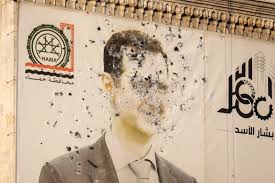A new official report by the Dutch Ministry of Foreign Affairs offers a comprehensive and sobering account of the situation in Syria following the dramatic collapse of the Assad regime in December 2024. The “Ambtsbericht Syrië – Mei 2025” (Country Report on Syria – May 2025), released this week, details the political vacuum, fragile power-sharing arrangements, and persistent security threats gripping the war-torn country nearly six months into its transitional period.
According to the 164-page document, compiled by the Ministry’s Country Information Department, the downfall of Bashar al-Assad was triggered by an unexpected twelve-day offensive launched by a coalition of armed opposition groups led by Hay’at Tahrir al-Sham (HTS). The regime’s rapid collapse was due in part to long-standing structural weaknesses within the Syrian military and the absence of effective support from key allies such as Russia, Iran, and Hezbollah, who were either preoccupied or strategically retreating.
From Revolution to Power: HTS Dominates the New Order
The report identifies Ahmad al-Sharaa, formerly known as Abu Mohammed al-Jolani, the leader of HTS, as the de facto head of Syria’s new transitional government. His ascension to the presidency on 29 January 2025 was formalized by a coalition of military groups, and a new interim constitution was signed in mid-March. While the report acknowledges efforts to create inclusive political institutions, it highlights growing concerns about centralized power, the predominance of Sunni Arab technocrats, and the lack of transparency in decision-making.
Despite public promises of democratic reform and national dialogue, Sharaa’s inner circle remains dominated by HTS loyalists, many of whom previously governed Idlib under the so-called Salvation Government. The Dutch report notes that the interim and transitional governments have largely recycled figures from that structure, raising doubts about genuine political pluralism.
Fragmented Control and Fragile Agreements
Although the new authorities claim to govern most of Syria, the report underscores significant territorial fragmentation. In practice, control is shared or contested across multiple regions:
- Turkish-backed factions maintain de facto rule in northern areas such as Afrin and A’zaz.
- Druze-led groups in Suweida and local militias in Daraa operate with relative autonomy and have yet to fully integrate into central state structures.
- In the northeast, Syrian Democratic Forces (SDF) remain dominant, with only partial agreements on integration reached thus far.
Efforts to consolidate national security forces under the “National Army” remain incomplete. While symbolic integration deals have been signed with the SDF and Druze factions, local resistance to disarmament and the limited reach of central authority continue to pose challenges.
Constitutional Concerns and Human Rights Criticism
One of the most controversial developments documented in the report is the March 2025 constitutional declaration, which suspended the 2012 Syrian Constitution and established a five-year transitional legal framework. The new charter grants extensive powers to the president, including the ability to appoint one-third of parliament, declare states of emergency, and control key judicial appointments.
While the document claims to guarantee civil liberties, critics including Human Rights Watch and Kurdish political factions argue that it centralizes executive authority and fails to explicitly protect ethnic and religious minorities. The Syrian Democratic Council and Kurdish National Council have both rejected the charter, warning of a return to authoritarian rule under a new guise.
Return and Reconstruction: Limited Progress
The report also addresses the return of displaced Syrians, noting that while some have begun returning home after Assad’s fall, widespread destruction, insecurity, and legal uncertainty—particularly around property rights—remain serious obstacles. A number of returnees have encountered destroyed homes or hostile reception in communities still marked by sectarian tension and mistrust.
Although the new administration has promised reconstruction and reconciliation, international donors remain cautious, and much of the economic recovery remains theoretical.
Foreign Powers and Regional Tensions
Foreign military presence continues to shape post-Assad Syria. The report confirms:
- Russian forces remain in Latakia and Tartous.
- Turkish troops hold positions across northern Syria.
- U.S. forces retain a limited footprint in the northeast in support of the SDF.
- Israeli military units have occupied strategic areas in Quneitra and Daraa, declaring an indefinite presence near the Golan Heights.
These overlapping presences underscore the geopolitical complexity of Syria’s future, with external actors actively influencing the shape of the transition.
Conclusion: The Illusion of Stability
The Dutch government’s report does not offer policy recommendations but presents a clear-eyed assessment of Syria’s volatile new reality. It portrays a country emerging from dictatorship only to enter a highly fragile and contested transition, where the central government’s legitimacy is still under construction and the risk of renewed conflict remains high.
Despite the rhetoric of reform and inclusion, the path forward appears uncertain. The ultimate success of Syria’s transition, the report implies, will depend not only on internal reconciliation but also on the willingness of regional and international powers to support a genuinely inclusive and accountable political order.


